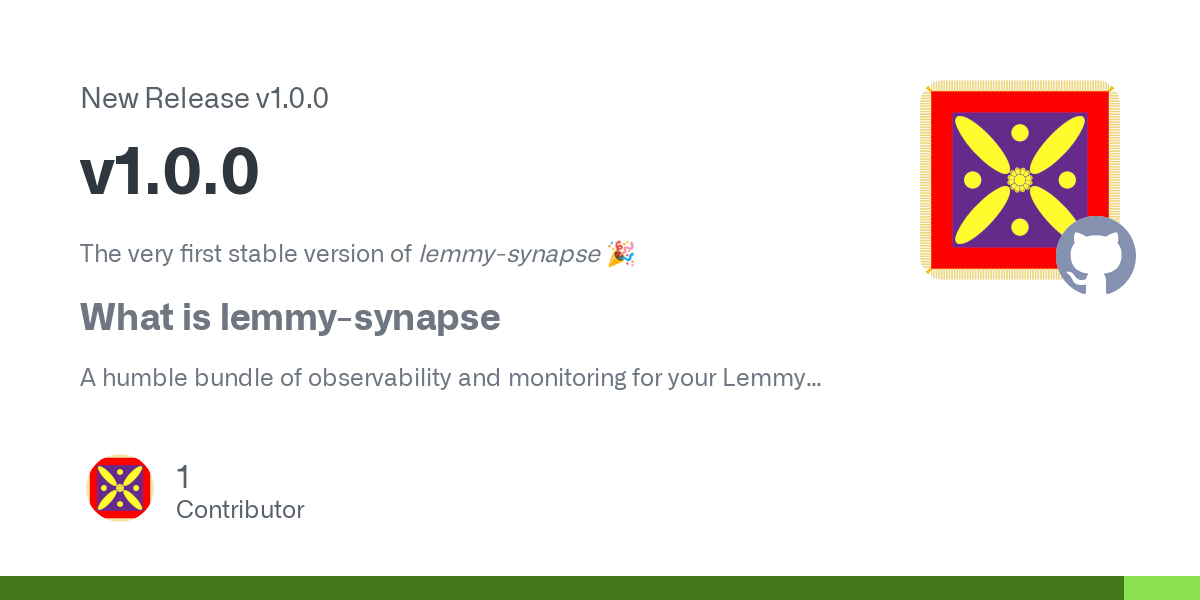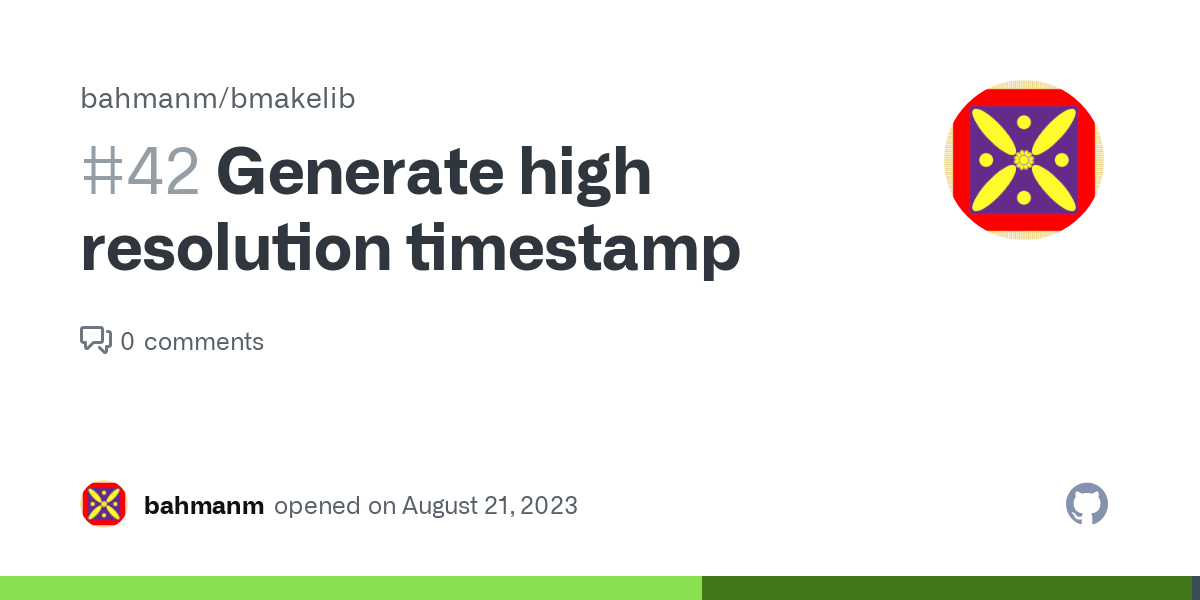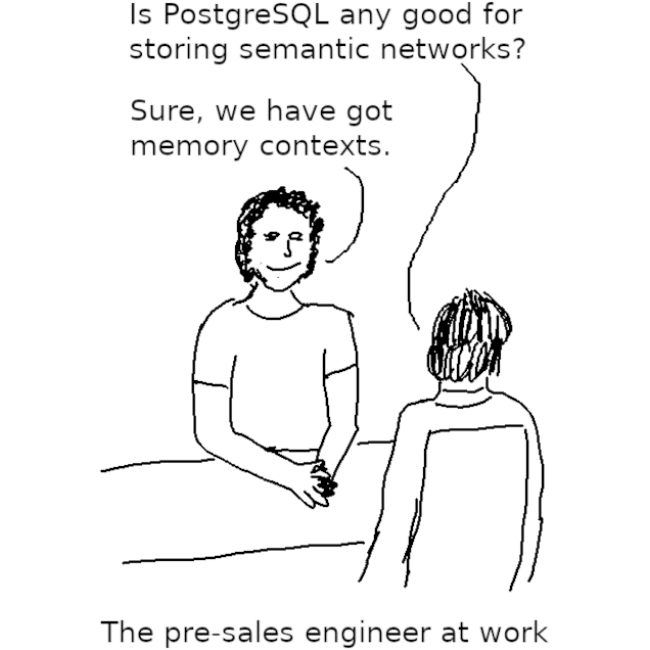bahmanm
Husband, father, kabab lover, history buff, chess fan and software engineer. Believes creating software must resemble art: intuitive creation and joyful discovery.
Views are my own.
- 35 Posts
- 131 Comments

 3·1 year ago
3·1 year agoUpdate
sh.itjust.works in now added to lemmy-meter 🥳 Thanks all.
I didn’t like the capitalised names so configured xdg to use all lowercase letters. That’s why
~/optfits in pretty nicely.You’ve got a point re
~/.local/optbut I personally like the idea of having the important bits right in my home dir. Here’s my layout (which I’m quite used to now after all these years):$ ls ~ bin desktop doc downloads mnt music opt pictures public src templates tmp videos workspacewhere
binis just a bunch of symlinks to frequently used apps fromoptsrcis where i keep clones of repos (but I don’t do work insrc)workspaceis a where I do my work on git worktrees (based offsrc)
Thanks! So much for my reading skills/attention span 😂
Which Debian version is it based on?
RE Go: Others have already mentioned the right way, thought I’d personally prefer
~/opt/goover what was suggested.
RE Perl: To instruct Perl to install to another directory, for example to
~/opt/perl5, put the following lines somewhere in your bash init files.export PERL5LIB="$HOME/opt/perl5/lib/perl5${PERL5LIB:+:${PERL5LIB}}" export PERL_LOCAL_LIB_ROOT="$HOME/opt/perl5${PERL_LOCAL_LIB_ROOT:+:${PERL_LOCAL_LIB_ROOT}}" export PERL_MB_OPT="--install_base \"$HOME/opt/perl5\"" export PERL_MM_OPT="INSTALL_BASE=$HOME/opt/perl5" export PATH="$HOME/opt/perl5/bin${PATH:+:${PATH}}"Though you need to re-install the Perl packages you had previously installed.

 3·1 year ago
3·1 year agoFirst off, I was ready to close the tab at the slightest suggestion of using Velocity as a metric. That didn’t happen 🙂
I like the idea that metrics should be contained and sustainable. Though I don’t agree w/ the suggested metrics.
In general, it seems they are all designed around the process and not the product. In particular, there’s no mention of the “value unlocked” in each sprint: it’s an important one for an Agile team as it holds Product accountable to understanding of what is the $$$ value of the team’s effort.
The suggested set, to my mind, is formed around the idea of a feature factory line and its efficiency (assuming it is measurable.) It leaves out the “meaning” of what the team achieve w/ that efficiency.
My 2 cents.
Good read nonetheless 👍 Got me thinking about this intriguing topic after a few years.

 4·1 year ago
4·1 year agoThis is fantastic! 👏
I use Perl one-liners for record and text processing a lot and this will be definitely something I will keep coming back to - I’ve already learned a trick from “Context Matching” (9) 🙂

 1·1 year ago
1·1 year agoThat sounds a great starting point!
🗣Thinking out loud here…
Say, if a crate implements the
AutomatedContentFlaggerinterface it would show up on the admin page as an “Automated Filter” and the admin could dis/enable it on demand. That way we can have more filters than CSAM using the same interface.
 1·1 year ago
1·1 year agoUpdate 1
Thanks all for your feedback 🙏 I think everybody made a valid point that the OOTB configuration of 33 requests/min was quite useless and we can do better than that.
I reconfigured timeouts and probes and tuned it down to 4 HTTP GET requests/minute out of the box - see the configuration for details.
🌐 A pre-release version is available at lemmy-meter.info.
For the moment, it only probes the test instances
I’d very much appreciate your further thoughts and feedback.
 2·1 year ago
2·1 year agoAgreed. It was a mix of too ambitious standards for up-to-date data and poor configuration on my side.
 11·1 year ago
11·1 year agosane defaults and a timeout period
I agree. This makes more sense.
Your name will be associated with abuse forevermore.
I was going to ignore your reply as a 🧌 given it’s an opt-in service for HTTP monitoring. But then you had a good point on the next line!
Let’s use such important labels where they actually make sense 🙂
 41·1 year ago
41·1 year agobeyond acceptable use
Since literally every aspect of lemmy-meter is configurable per instance, I’m not worried about that 😎 The admins can tell me what’s the frequency/number they’re comfortable w/ and I can reconfigure the solution.
You can hit the endpoint /api/v3/site for information about an instance including the admins list.
Exactly what I was looking for. Thanks very much 🙏
 4·1 year ago
4·1 year agoThanks for the link. Had no idea about that.

 231·1 year ago
231·1 year agoThis is quite intriguing. But DHH has left so many details out (at least in that post) as pointed out by @[email protected] - it makes it difficult to relate to.
On the other hand, like DHH said, one’s mileage may vary: it’s, in many ways, a case-by-case analysis that companies should do.
I know many businesses shrink the OPs team and hire less experienced OPs people to save $$$. But just to forward those saved $$$ to cloud providers. I can only assume DDH’s team is comprised of a bunch of experienced well-payed OPs people who can pull such feats off.
Nonetheless, looking forward to, hopefully, a follow up post that lays out some more details. Pray share if you come across it 🙏
TBH I use whatever build tool is the better fit for the job, be it Gradle, SBT or Rebar.
But for some (presumably subjective) reason, I like GNU Make quite a lot. And whenever I get the chance I use it - esp since it’s somehow ubiquitous nowadays w/ all the Linux containers/VMs everywhere and Homebrew on Mac machines.

 1·1 year ago
1·1 year agoLove the attitude 💪 Let me know if you need help in your quest.

 2·1 year ago
2·1 year agoI see.
So what do you think would help w/ this particular challenge? What kinds of tools/facilities would help counter that?
Off the top of my head, do you think
- The sign up process should be more rigorous?
- The first couple of posts/comments by new users should be verified by the mods?
- Mods should be notified of posts/comments w/ poor score?
I’m nitpicking but can you properly quote your code?


 9·1 year ago
9·1 year agoInteresting topic - I’ve seen it surface up a few times recently.
I’ve never been a mod anywhere so I can’t accurately think what workflows/tools a mod needs to be satisfied w/ their, well, mod’ing.
For the sake of my education at least, can you elaborate what do you consider decent moderation tools/workflows? What gaps do you see between that and Lemmy?
PS: I genuinely want to understand this topic better but your post doesn’t provide any details. 😅











“Announcment”
It used to be quite common on mailing lists to categorise/tag threads by using subject prefixes such as “ANN”, “HELP”, “BUG” and “RESOLVED”.
It’s just an old habit but I feel my messages/posts lack some clarity if I don’t do it 😅